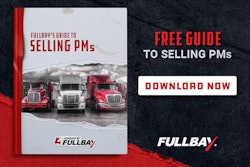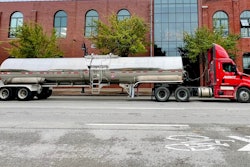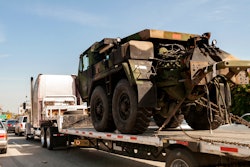Federal Motor Carrier Safety Administration announced plans for a study of commercial motor vehicle driver risk factors that will aid the agency in developing future safety initiatives. The purpose of the study would be to identify, verify, quantify and prioritize personal attributes – such as demographic characteristics, medical conditions, personality traits and performance capabilities – and environmental attributes, including carrier operations type and compensation methods. The study would seek a link between attributes and driving history.
Truckload Carriers Association named the grand prize winners of the 2006 National Fleet Safety Awards. Bison Transport of Winnipeg, Manitoba, Canada, won in the category of companies operating more than 25 million miles annually, and Don Hummer Trucking of Oxford, Iowa, won in the category of companies operating less than 25 million miles annually. The two were selected from among 18 division winners in the National Fleet Safety Division Awards announced in January.
J.J. Keller & Associates Inc. recently introduced Keller-Soft Safety Incentives & Awards Tracker, a software program that helps users develop, manage and report on driver bonus and awards programs. The program is designed to allow users to select from a number of safety, longevity and performance factors in order to create and customize award programs that will suit their operation. Once driver data is input, the software maintains and reports on driver eligibility for the award programs. For more information, go to this site.
Larger carriers are more likely to govern their trucks at lower speeds than smaller carriers, the American Transportation Research Institute reported in late March. In a survey of carriers conducted earlier this year, approximately a third of carriers with 100 or fewer trucks using governors set governed speed at higher than 70 mph, while only 15 percent of larger carriers do so. Overall, 69 percent of carriers responding to the survey reported using speed governors on at least some of their trucks.
ATRI – a not-for-profit research organization affiliated with the American Trucking Associations – in late March released its preliminary analysis of results from its industry survey on speed governor use. The survey is part of a larger yearlong ATRI initiative to analyze the potential safety impacts of speed and speed differentials on trucking safety and operations.
According to the survey, just under one-third of large carriers chose a speed setting of 65 mph or lower. More than 27 percent of carriers with 10 or fewer trucks used this setting, as did about 16 percent of carriers operating 11 to 100 trucks. For carriers in the survey that use truck speed governors, the average and median speed setting is 69 mph, ATRI said. The mode – most commonly cited speed – was 70 mph.
More than a third – 37.8 percent – reported using different speeds for maximum cruise and maximum on-pedal speeds. Of those using different speeds, 61 percent set a higher on-pedal speed, typically because it allowed the driver to pass slower vehicles when necessary, ATRI said. The remaining 39 percent, however, preferred a higher cruising maximum because it encouraged more use of cruise control for fuel efficiency.
ATRI’s preliminary analysis is based on a fairly small sample of 148 responses, of which larger carriers dominate. More than 35 percent of respondents operated more than 100 trucks, and almost 38 percent operated between 11 and 100 trucks. The average fleet size for operations using governors was 1,142 trucks. The average size of carriers not using governors was 114 trucks. The mean fleet sizes were 79 trucks for carriers using governors and 10 trucks for those not using the devices. The survey sample was not random but rather was based on a solicitation to the industry that ATRI issued in February.
The goal of ATRI’s research effort is to model a range of truck speeds that can be expected to maximize both safety and fuel efficiency. The second phase will address speed differentials and the risks associated with them.
ATRI welcomes further survey responses at this site. A copy of ATRI’s preliminary findings is available at this site.
Sweet slower home, Alabama
The speed limit at the intersection of I-20/59 and I-65 in Birmingham, Ala. – the site of several steel-coil spills in recent years – was dropped in late March from 60 mph to 50 mph. The change is part of the joint effort of state lawmakers, Gov. Bob Riley, the Alabama Trucking Association and others to mitigate what has become a regular occurrence at the interchange and elsewhere in the Birmingham area. A total of 26 coils dropped since 1987 was reported by the Birmingham News on the occasion of the most recent, Feb. 18 of this year.
The speed-limit reduction “was one of several items that we suggested,” said Gene Vonderau, the Alabama Trucking Association’s safety director. Others included imposing “strict penalties on drivers and trucking companies who negligently drop loads out there,” load securement inspection, truck-only highway lanes and a certification program for haulers of steel coils in the state of Alabama, Vonderau said.
Meanwhile, legislation to regulate steel-coil haulers more tightly is advancing in the state Legislature. The bill, sponsored by Rep. Paul DeMarco, R-Homewood, would impose stiff penalties on drivers who spill coils and on the trucking company owners. It also requires trucking companies to train their drivers to properly load steel coils, and to certify the drivers; drivers would have to keep the certification with them. “The bill allows troopers to arrest coil truck drivers who violate the proposed law, whether the trooper witnesses the spill or not,” DeMarco said.
Capt. Harry Kearley, head of the state’s truck inspectors, said the legislation would provide that a study guide would be posted on the Alabama Department of Public Safety website where trucking company officials can download the test and certification forms. “This requires that trucking companies take a positive step or they can be fined up to $10,000 if one of their trucks loses a coil,” Kearley said. “This means the companies will bear some of the responsibility.”
– Todd Dills
Preventable or not: No Philadelphia freedom for Doe
With an empty trailer in tow and no backhaul available, trucker John Doe happily was homeward bound, attempting to exit beautiful, downtown Philadelphia – which, as usual, was proving to be a painfully slow process. Working his way toward the interstate ramp down a narrow, all-too-familiar stretch of logjammed city street at less than 10 mph, Doe constantly scanned his mirrors for any impending trouble, slurping his lukewarm coffee to stay alert.
Oh well, at least the sun was shining, thought Doe, who tuned his iPod to a favorite, soul-soothing bluegrass song. Suddenly, a grey-primed Chevy Caprice Classic – equipped with loud duals, padlocked hood, rear-axle lift kit, super-fat drag tires, gold-tone wheels and traction bars – materialized in Doe’s left-side mirror.
Driven by Johnny J. Papalazzi Jr. – who was fighting traffic while running late for his shift busing tables at Cheesesteak Charlie’s – the Heavy Chevy came abreast of Doe’s tractor









